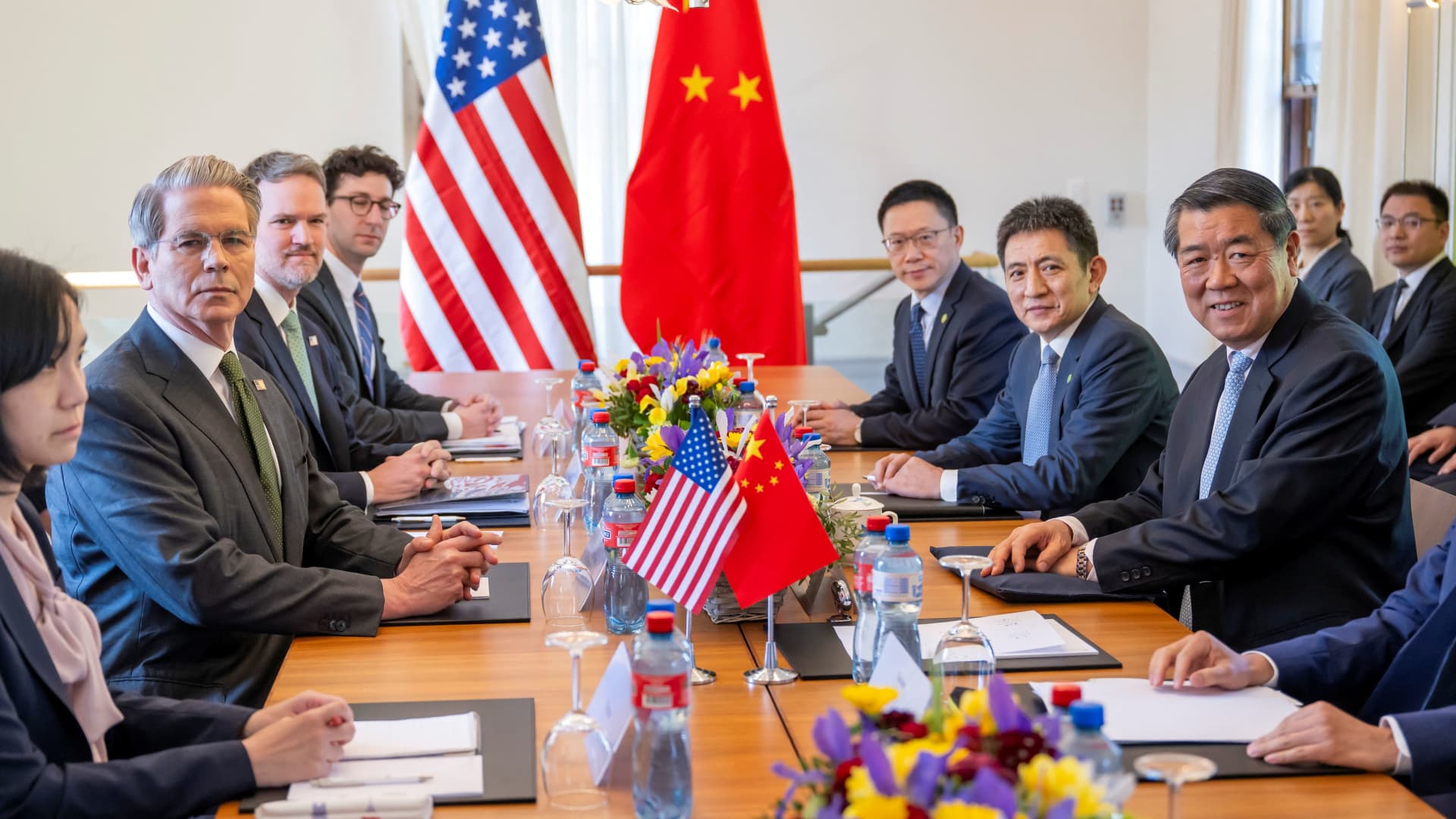Navigating the Complex Terrain of U.S.-China Trade Relations
The unfolding narrative of U.S.-China trade relations reflects a saga of rivalry, negotiation, and cautious diplomacy. With the announcement of a new round of high-stakes talks set in London, this chapter offers a glimpse into how two global economic giants approach the delicate balance of competition and cooperation. Understanding the historical context, the implications of these talks, and the obstacles ahead provides clarity on what may come next in this pivotal economic relationship.
Historical Context: From Tariffs to Tense Diplomacy
The U.S.-China trade relationship has long been fraught with tension, punctuated by aggressive tariff measures and a battle over strategic resources and intellectual property. The Trump administration’s imposition of tariffs reaching up to 145% on certain Chinese goods was a defining moment, signaling a hardline stance aimed at recalibrating what the U.S. viewed as imbalanced trade practices. Beijing’s retaliatory tariffs mirrored this approach, escalating the conflict and reshaping global trade patterns.
Previous negotiations, though yielding temporary pauses and tentative agreements, failed to surmount the deeper issues of distrust and unresolved disputes. These stalemates underscored the challenge of finding common ground amid divergent economic interests and political narratives, where neither side wanted to show weakness. The resulting landscape was one of persistent uncertainty, with markets sensitive to each new development.
The London Talks: A Symbolic and Strategic Engagement
The decision to convene talks in London injects a new dimension into U.S.-China trade diplomacy. London, as a global financial hub, provides a neutral stage that subtly emphasizes the international stakes of these negotiations beyond bilateral disputes.
The composition of the U.S. delegation—comprised of top officials from Treasury, Commerce, and the Office of the U.S. Trade Representative—signals the seriousness with which America approaches this round. The preparatory positive telephone exchange between Presidents Trump and Xi Jinping adds momentum, suggesting a willingness to engage that contrasts with recent rhetoric and tariff escalations.
Core Issues on the Table
While precise details remain confidential, certain critical topics are expected to dominate discussions:
– Tariff Adjustments: Proposals to reduce tariffs from peak levels to around 80% mark a possible middle ground. Such shifts could ease trade flow disruptions and market anxieties, though they reflect a cautious rather than complete rollback.
– Rare Earth Minerals: Access to these minerals is increasingly vital given their role in technology and defense industries. Negotiating reliable supply chains could ease some strategic vulnerabilities.
– Intellectual Property and Technology Transfer: Persistent concerns regarding IP protection and the control over technology flow—including entities like TikTok—highlight the broader struggle over technological dominance and economic security.
– Sensitive Product Tariffs: Discussions on items related to fentanyl precursors and enforcement may serve as smaller, concrete areas where incremental progress is achievable.
Broader Economic and Political Reverberations
The timing of the London talks dovetails with the Trump administration’s concurrent trade deal efforts with the U.K. and a push to realign worldwide trade policies favorably. Politically, opening these talks may help temper market volatility and geopolitical friction generated by months of tariff warfare and inflammatory exchanges.
Market reactions such as surges in Brent crude prices reflect investor optimism that some thaw is possible. Yet, the cautious tone from analysts reminds us that geopolitical complexity and mutual wariness remain substantial barriers to swift breakthroughs.
Anticipating Obstacles and Complexities
Despite the optimism surrounding renewed dialogue, formidable challenges loom:
– Political Entrenchment and Distrust: Deep-seated suspicions on both sides complicate compromise, with each party guarding core interests tightly.
– Domestic Political Imperatives: U.S. tariffs often serve as political leverage domestically, limiting flexibility. China, similarly, faces internal pressures to protect its strategic industries and national pride.
– Supply Chain Shifts: Businesses have adapted to tariffs by revamping supply chains, making abrupt policy reversals disruptive and costly.
– Geopolitical Headwinds: Beyond trade, issues like military competition and human rights create an overarching tension that casts a shadow on economic negotiations.
Moving Forward: The Road to Stability
The London talks represent a tentative but vital attempt to restart meaningful engagement between two economic titans whose fates are deeply intertwined. The high-level commitment and presidential involvement offer hope for measured progress, though expectations must be tempered by the reality of entrenched disputes and multifaceted geopolitical challenges.
This negotiation underscores an essential truth: the U.S.-China relationship is less about choosing between rivalry or cooperation and more about managing the two simultaneously in a world defined by economic interdependence. While a radical transformation may be beyond immediate reach, these talks signal a pragmatic recognition that sustained dialogue remains indispensable.
The outcomes of these discussions will resonate far beyond tariffs and trade volumes. They will provide key insights into how the global balance of power shifts and, ultimately, how the world’s largest economies adapt to an era of complex competition and cautious collaboration.












